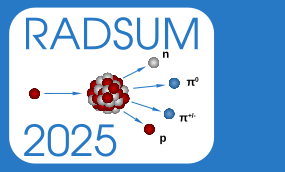Conveners
Design of superconducting magnets and shieldings for high-radiation environments
- Luca Bottura (CERN)
Design of superconducting magnets and shieldings for high-radiation environments
- Luca Bottura (CERN)
As accelerators become more powerful, superconducting magnets used to generate and transport secondary particles such as muon sources are also required to have high radiation resistance. The COMET experiment at J-PARC requires the highest intense muon beam to search for rare processes beyond the Standard Model. The muon beam line is designed with high-field superconducting solenoids to capture...
Magnet shielding design in high-energy particle colliders is a multidisciplinary challenge, requiring consideration of diverse constraints to ensure both performance and longevity of components. An integrated design shall address key factors such as power load management in relation to quench and cryogenic limits, dose tolerance for organic materials, displacement per atom (DPA) thresholds for...
A construction plan for a second target station of Materials and Life Science Experimental Facility (MLF-TS2) has been proposed at J-PARC. At the MFL-TS2, which extracts a primary proton beam with a power of approximately 1 MW, a superconducting solenoid for a muon source is placed at the backward position particle generation target to maximize muon beam yield. The nuclear heating would be an...
The Paul Scherrer Institute (PSI) operates the world's most powerful proton accelerator. Currently, all magnets are resistive and require about 2.6 MW of power. Due to the high level of radiation, about 20% of the magnets are designed to be radiation resistant.
Energy efficiency is nowadays a crucial concern for the accelerator community, prompting an exploration of alternative solutions to...
Designing magnet systems for fusion devices, including tokamaks, stellarators, and mirror machines, requires careful consideration of the intense radiation environments in which these systems operate. This study focuses on the conceptual design and optimization of magnet systems for DEMO and VNS machines, with particular attention to achieving a balance between compactness, durability, and...
Recent progress in high temperature superconducting (HTS) magnets has greatly enhanced the potential of spherical tokamaks (ST) for harnessing fusion energy. Given the compactness of an ST and high plasma density, the centre column shield is subjected to challenges such as high neutron load, volumetric heating from neutrons and gamma radiation, and a limited amount of available space. The...
Commonwealth Fusion Systems (CFS) is building the world’s first compact net energy fusion device, SPARC, by utilizing recent advances in the commercial production of 2G REBCO coated conductors. SPARC’s delivery and operation will inform the design of ARC, the world’s first fusion power plant, scheduled to come online in the early 2030s. The design, safe operation, and quench protection of high...
In the context of the EuroSIG project, a carbon-ion gantry is being designed for possible installation at CNAO (the National Center for Oncological Hadrontherapy located in Pavia, Italy) and MedAustron (located in Wr. Neustadt, Austria). The current lattice design foresees superconducting (SC) dipoles and normal-conducting quadrupoles. Differently from the normal-conducting ones, SC magnets...
